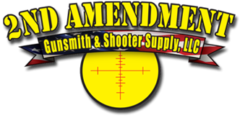Many hunters fail to realize that most factory production rifles have poor-quality triggers that inhibit or prevent accurate shooting. Typically, today’s factory triggers are burdened by 6-9 pounds of pull with 1⁄10-inch of movement before letting off (this is called creep) and significant movement after let-off (called slop or over-travel).
Why are factory trigger pulls typically on the heavy side? The primary reason is litigation. Today’s “lawyer-proof” triggers are the result of dozens of lawsuits that have hurt firearms manufacturers. The second reason is setting triggers for maximum performance costs money because it is a labor-intensive procedure. Trigger parts operate best when they’re polished smooth and perfectly matched, and that requires handwork that costs money. The name of the game is making a profit, so spending undue time on triggers reduces profit margins.
Good Trigger = Good Shot
For you to shoot a rifle accurately, a trigger’s pull must be no more than 4-5 pounds, although I prefer 21⁄2-3 pounds. The trigger should be as heavy as you can shoot well—not as light as you can get it. Next, the trigger must have minimal movement before and after let-off; it should break crisp and clean. Finally, the trigger should be reliable, regardless of dirt, moisture or extreme temperatures.
When you shoulder a new rifle, you naturally assess balance and fit. (NOTE: Always check a rifle to make sure it’s not loaded, and keep the muzzle pointed in a safe direction.) You also want to know how the trigger feels. One or two dry-fires will indicate if the trigger is properly set and enjoyable to fire. Thankfully, most triggers are adjustable so their performance can be improved, and most non-adjustable triggers can be replaced with after-market models by a skilled do-it-yourselfer or qualified gunsmith.
I recently spoke with the owners of five major trigger manufacturing companies, and each one really cares about the safety of the shooters who use their products. Bottom line, they want to ensure their products are installed correctly. If you’re a do-it-yourself type, these owners suggested you contact the factory for advice and assistance if needed.
•JEWEL TRIGGERS INC., (512) 353-2999: Jewel triggers have earned an enviable reputation with the benchrest and precision shooting fraternity, and they’re available for Winchester and Remington-style actions.
“What’s the difference between our triggers and most of the other trigger companies?” asked owner Richard Jewel. “Very simply, we hand-grind and polish surfaces to plus or minus 1⁄10,000-inch. We hand assemble every trigger, fitting every part perfectly. Although our triggers are used on super-accurate benchrest rifles, they’re tough enough for tactical and hunting rifles.”
Jewel ended our conversation with one bit of advice: “Anything is better than a factory trigger.”
•M.H. CANJAR, (303) 295-2638: Mary White, president of M.H. Canjar triggers, told me its single-set trigger design has remained virtually unchanged since its introduction in 1947. “Naturally the tooling has been updated,” she said, “but the basic design is still in use. We have triggers for Savage 110 and 112s, Ruger 77s, Remington 700s and 788s, Winchester Model 70s and the Ruger No. 1 single-shot rifle.”
White mentioned the importance of following the instructions exactly. “Don’t let a ‘basement gunsmith’ do the job,” she said. “You need a properly trained individual to install your trigger. For about $75 we’ll install any Canjar trigger bought from us.”
•RIFLE BASIX, (704) 499-3087: Owner/President Bob Brasfield re-affirmed the importance of customers contacting the factory if they have any concerns when installing triggers. “Our Savage trigger should install in approximately 10-15 minutes.” he said. “Our instructions are simple to follow for every trigger we sell. The newest Savage trigger even comes with a CD-ROM instructional movie. We’re expanding our offerings well beyond the Savage triggers that have been our bread and butter. We have some excellent rimfire replacement triggers, and our new Remington and Winchester Model 70 triggers are also significant improvements.”
•SHILEN RIFLES INC., (972) 875-5318: Wade Hull, president of Shilen Rifles, says his company offers two triggers for the Remington Model 700 action. The Standard Trigger is fully adjustable with pull weights from 11⁄2-3 pounds.
“Be confident you can handle the installation,” Hull said. “If it doesn’t feel right, contact the manufacturer. Or better yet, get a competent gunsmith to do the installation.” Hull also says it’s best to clean your trigger regularly with Ronsonol cigarette lighter fluid. It’s an excellent solvent and leaves a lubricant film with no varnish residue.
•TIMNEY MANUFACTURING INC., (866) 484-6639: Owner John Vehr is justifiably proud of the huge changes in trigger manufacture since Timney began in 1946. Timney, the world’s largest manufacturer of triggers, is also a leader in the field of technology. “We have invested in equipment and people,” he said. “Our EDM and CNC machines are operated by the best programmer-machinists in the business. We heat-treat our steel parts and have a case-hardening process applied for maximum strength. We can polish to 7⁄1,000,000-inch as required!”
Most of the triggers mentioned in this column can be purchased directly from the manufacturers or your local gun shop. Also check the catalogs from Brownells, Sinclair and Midway for a wide selection of makes and models. Regardless of where you buy a new trigger and what brand you purchase, I’m confident you’ll be amazed at how well you shoot with it.


Are you able to improve the trigger in a Browning BLR?